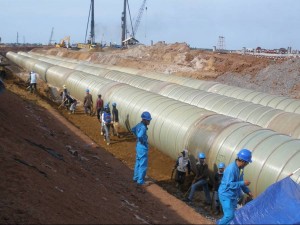Cupronickel alloys for preventing biofouling
An engineer usually begins with alloys that meet the stress and mechanical factors. This post shows the significant information to make critical estimate on the effects of natural conditions on the cupronickel alloys. It is also important to receive a personal experience with the metals. Normal temperature and pH values are significant for any application.
Water
The key elements of water that influences of application of alloy 400 are oxygen, minerals,  biofouling, germs, sediment, trash, dust and chlorine received from the chlorination procedure. The solution oxygen is noticed for standard water determination. Although, the nature of germs, minerals, biofouling, sediments and chlorine are normally dangerous for the application of alloy, little information on these elements is also included.
biofouling, germs, sediment, trash, dust and chlorine received from the chlorination procedure. The solution oxygen is noticed for standard water determination. Although, the nature of germs, minerals, biofouling, sediments and chlorine are normally dangerous for the application of alloy, little information on these elements is also included.
Development of security layer
The corrosion resistance characteristic of cupronickel alloys in the marine water is found through the nature of development of security layer. North and Pryor found a layer to be widely large of cuprous oxide including cuprous hydroxychloride and cupric hydroxychloide and cupric oxide that are available in the required magnitude. This analysis shows the corrosion resistant layer thickness of 2800oA of copper and 4400oA for copper-nickel alloy.
The layer is reliable and of greenish brown shade. This corrosion resistant layer is developed quickly when cleaned, unlayered copper alloys are first immersed into marine water. The rate of layer developed increases as the copper loss rate. The copper in sewage water reduces ten times. In three months, copper reaches at the general level of copper present in drinking water.
The weight loss studies describe that security layer improves with the corrosion reduction rate to 0.5 mpy for increased time the stable rate of 0.001mm each year, in the tidal or running marine water cupronickel alloy 70/30 has the same way of reducing corrosion rate with the passage of time. Reinhart found that copper and copper alloys comprising of aluminum, tin, silicon, nickel, beryllium show wide corrosion rate after 3 years as compare to the alloys after 6 months in the marine applications.
The only exception is alloy C28000 that achieves higher corrosion rate after 3 years as compared to 6 months. Alloy C44300 was in group characterized by decreased corrosion rate with the time. The long corrosion rate for copper and its alloys is 0.05mpy at the velocity that allows work without affecting the security layer.
If data received from corrosion rate of copper materials in the marine tests is utilized for comparison of various alloys in the rest tharch study, it cannot be useful to find the service life. Only long, stable corrosion rate is used to provide the desired service life for copper alloys.
Effect of velocity on corrosion rate
The running seawater on the surface develops shear stress between the surface and marine water layer close to the metal. The high velocity, shear stress enhances as long as it fully discards the security layer of cupronickel alloy like alloy 400.
The essential shear stress for C12200, C68700, C70600, C71500 and C72200 is evaluated. The shear stress changes with speed and diameter of pipe or tube. The shear stress in pipe of 1 inch diameter at 3m per second is not bigger than in pipe of 12 inch at speed of 3.7m per second or that in pipe of 10 foot diameter with speed of 16 fps.
With high diameter, cupronickel alloys get nominally higher velocities in the pipes.
The shear stress at the inlet and condenser tube is double of the next down. Why inlet end corrosion normally occurs and gives the reasons to select the cupronickel alloys that are made to offer the high velocity corrosion resistance. Water velocity going through a small obstruction in bore tubes is 8m/sec although, the net velocity is 2m/s. It offers a reason of damage of tube downstream of lodgements in condenser tubes while using in the debris water.
Composition effect
The tensile strength, proof stress and hardness of cupronickel alloys enhance with addition of nickel content. A nominal decrease in elongation and reduction of area with increase in tensile strength is noticed.
Iron has a good effect on the mechanical properties of copper-nickel alloys. The enhancements in the mechanical properties of these alloys are attained by increasing the concentration of iron and manganese by 2%. Addition of aluminum or chromium additionally increases the strength. In the metallic materials, tensile strength, proof stress and hardness are improved by cold deformation of wrought copper-nickel alloys besides of decreasing elongation.
The CuNi alloys containing aluminum can be used in the cast form or age hardened. The highest strength increase is achieved by adding beryllium after age hardening. This type of alloy is also installed in USA for marine applications. The high strength age hardened cupronickel casting alloys made of 6% tin concentration usually include additional elements like lead and zinc.
Low temperature mechanical properties
Just like copper alloys, the cupronickel alloys provide excellent mechanical properties at low temperatures. The tensile strength of these alloys reduces with decreasing temperature without affecting elongation and reduction area percentage. So cupronickel alloys prevent embrittlement at low temperature limits. They are ideal for cryogenic applications. The most commonly used grades are Cupronickel 90/10 alloy and Cupronickel alloy 70/30 alloy.

